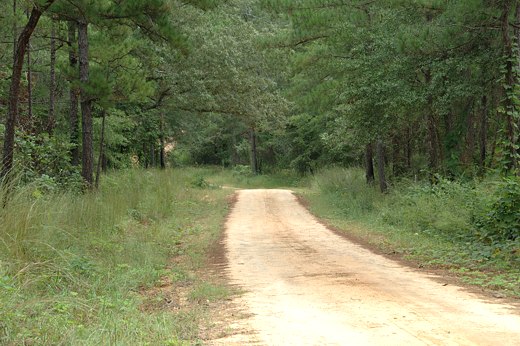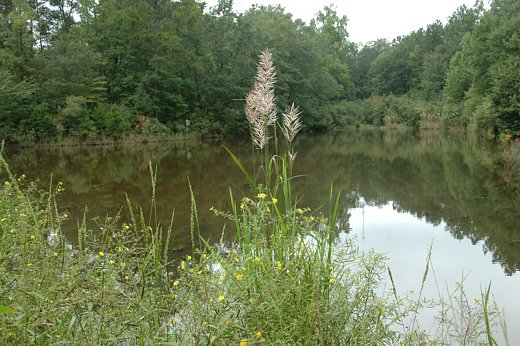Tuskegee National Forest

Typical access road in the Tuskegee NF
There are only two national forests with no developed campgrounds: Tuskegee in Alabama and Delta in Mississippi.
A little background info on the Tuskegee NF. The land, purchased by the federal government between 1935 through 1938, was once one of the most eroded and abused territory in Alabama. Many restoration projects and changes occurred between the time of purchase and November 27, 1959, when it was proclaimed a national forest by President Eisenhower. Since then the Tuskegee NF continues to be a landscape reborn and healing.
When I first spoke with the Forest Service person responsible for recreation in the Tuskegee, he gave me a few tidbits. First, this forest is popular with college students (Auburn and Tuskegee universities within a 12 mile drive of the forest). The forest is one of the few in the Forest Service that is in only one County. And, while you can camp anywhere in the forest (except during hunting season), a no cost campfire permit is required.
While Tuskegee has no developed campground is does have a bunch of what we call “designated disperse” campsites. These “designated disperse” sites are area’s of various sizes that have been cleared, relatively level, and mostly open spaces. There are no frills, no tables, no grills, and nothing at these sites. Bare bones basic, yes. But to me, they seem perfect for a group of tent or car or a couple of adventurous rv campers.
It took us a couple of days to find all the “developed disperse” sites (we’ve posted their gps locations on forestcamping.com) and we got a good look at this forest. This forest could really use some funding but they are doing the best they can with what they get.
Fishing is available in three locations: Okhussee Chutkee (small pond) and Okhussee Thloko (big pond) have catfish; and we are told, Largemouth bass are in an oxbow pond near the Tsinia Wildlife Viewing Area. The Tsinia Wildlife Viewing Area is a great idea that has fallen into hard times– so sad. Taska Recreational Area is now only a picnic area, nice but more a rest stop than anything else. There are three hiking trails: Bartram, Pleasant Hills, and Bold Destiny. I would say they are all day hikes but, between the rain, heat, and humidity, we did not hike any of them. Like I said, Tuskegee is a small forest with limited recreational opportunities.
Fred and I believe there is a reason for every national forest. Perhaps I should have talked with some other member of the Tuskegee National Forest’s team to learn more about this forest and what the purpose is for it. I hope it is more than just a place for college students and hunters.
I’m glad we finally got to spend some time in the Tuskegee, and I hope Auburn and Tuskegee universities takes advantage of this little parcel of public lands, but I don’t think there is any reason for us to return. It is unfortunate but there are some national forests that I make me wonder “Why?”




Suzi, there’s a reason you don’t understand. You have never had to experience what people in that area did. I’m from poor rural AL. To have anything is something. I also had the privilege of attending Tuskegee Inst, a world renown school built on a red dirt rock. Yes it should receive the same care as our other forest but we both know it probably never will.
Thank you for your time.